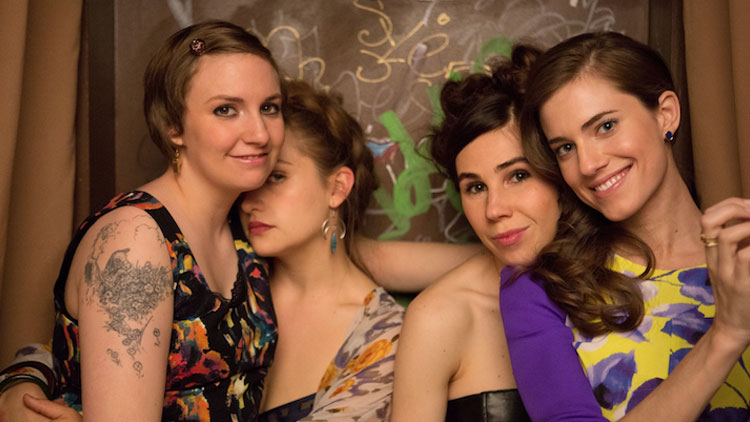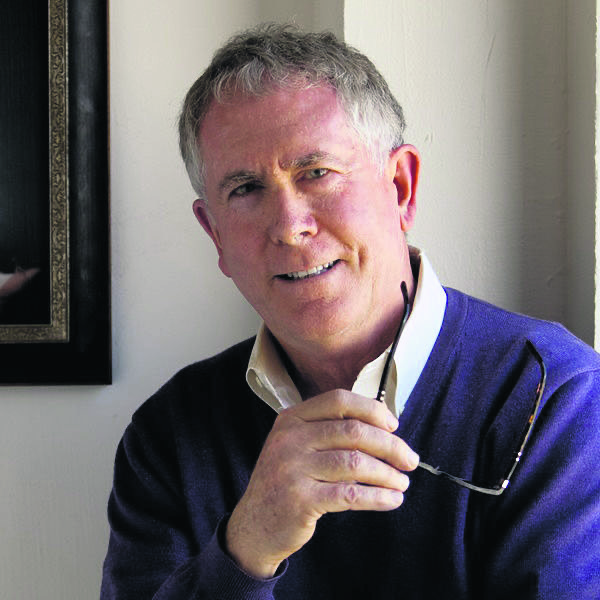When I was in my early twenties, my boyfriend’s tongue was pierced. He had tattoos on his forearm that were so hideously ugly that I thought they were the sexiest things ever. My best friend’s boyfriend wore overalls. Like, out, at a club. When we all broke up, we did humiliating, dramatic, stalkerish things, and cried and listened to Sarah Mclachlan and wrote in journals and opined endlessly. We were self-absorbed, shrill, and undoubtedly annoying to anybody who came into contact with us, as we were to each other.
These are some of my best memories. These are the times we drink to, when we put the kids to bed and leave our husbands for the night to get together to drink Pinot Noir.
And this is what I watch Girls for.
Since the show’s inception, viewers and reviewers have tried to place HBO’s Girls in the same category as Sex and the City: four chicks in their twenties trying to “make it” in New York, whatever that means. But anyone who’s followed Girls through it’s three seasons so far knows that not only is Girls nothing like Sex and the City, it’s nothing like anything we’ve seen on television.
In this, the golden age of television cinema—from Breaking Bad to Downton Abbey and True Detective—we have so many high caliber shows fighting for our viewing time.
Girls wins mine.
What separates Girls from other cable sitcoms is the truth it’s based on. This is almost the natural sequel to My So Called Life, but with self-awareness and the bravery to explore the ugly self-absorption of the life of a twenty-something.
To my experience, in my thirties, my own life became less about me. It was about my kids, breast or bottle, work/life balance, and trying to remember to be a wife to my husband. I didn’t have time to indulge in the inward searches that dominated my twenties, to wonder who I was or who I was going to be. I went through style changes in my twenties, from wearing hats and bowling shoes and sundresses and butterfly clips in my hair. I don’t now. Maybe it’s because I know who I am, but more likely it’s because I don’t have the time to consider it all.
Lena Dunham captures that for me. She commits. She’s caught a lot of flak from critics (almost exclusively male critics) for her excessive nudity. It’s brought attention to her weight, to her tattoos, to what our expectations of on-screen nudity should be and what it’s for. There are some who cannot comprehend the fact that her naked body isn’t there to titillate them.
It’s there as an extension of her honesty.
She shows the shallowness of that age, the fact that friends use and betray and disappoint each other, and that they can be vastly unhappy. She shows the awkwardness of relationships; she focuses the camera on the most uncomfortable sex scenes, without making them campy or ironic or funny. She isn’t afraid to show ugliness or characters that manipulate or lie.
And through that lens we see the truth of not only Dunham’s vision or experience, but the very humanness of those characters, and through them, our own. Sometimes that reflection isn’t pretty. And that feeling causes some of us to reject it, to criticize it, to focus on Lena Dunham’s naked body. I’d argue that the whole show is Dunham’s naked self: without make-up, without airs, but with stark and sometimes brutal honesty. It’s like nothing else done before on television.
If I could speak to the characters, I’d tell them that life will happen whether they agonize over it or not, that when they get too busy to wonder who they are, that’s exactly the time they’ll know. Relationships will fail, parents will die, and friendships will endure, long past the time you get over your tongue-pierced boyfriend and his overalls-wearing friend.
And if I could speak to Lena Dunham, I’d say thank you.
































